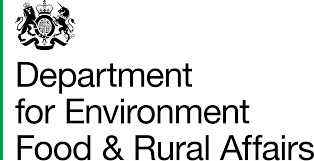The press release issued by the Department for Environment, Food and Rural Affairs on 28 February 2023.
Government today announces three Highly Protected Marine Areas will be designated by July 2023.
Marine habitats and wildlife are set to receive the highest levels of protection as the Environment Secretary today (28 February) announces the Government will designate the first three Highly Protected Marine Areas in English waters.
Delivering on the commitments set out in the Environmental Improvement Plan, Highly Protected Marine Areas will enable nature to fully recover by removing all harmful activities including fishing, construction and dredging, increasing marine biodiversity and supporting climate-resilient ecosystems to thrive.
From safeguarding ‘blue carbon’ habitats to help tackle climate change; protecting the feeding and nursery grounds of commercially important fish species such as cod and herring; through to reversing the impacts of human activity on degraded marine ecosystems, the first three Highly Protected Marine Areas were chosen due to the ecological importance of nature recovery in the sites.
The three sites being taken forward will be designated before 6 July 2023 and are Allonby Bay (Irish Sea), Dolphin Head (Eastern Channel) and North East of Farnes Deep (Northern North Sea).
Environment Secretary Thérèse Coffey said:
Our comprehensive Environment Improvement Plan sets us on a path to deliver an improved marine environment and halt the decline in biodiversity which benefits us all.
Highly Protected Marine Areas are a vital step forward in enabling our ecosystems to thrive, increasing climate resilience and ensuring we have a healthy and productive marine environment for generations to come.
The first three Highly Protected Marine Areas include inshore and offshore sites and will complement the existing network of Marine Protected Areas covering 40% of English waters. Their introduction follows recommendations in the Benyon Review to help achieve clean, healthy, safe, productive, and biologically diverse ocean and seas, and drives forward the Government’s commitment to protect at least 30% of the global ocean by 2030.
Marine Minister Lord Benyon said:
This is a crucial next step to aid marine ecosystem recovery in our waters and I’m delighted to see my recommendations become a reality today.
Not only will the first of these Highly Protected Marine Areas protect important species and habitats, but they will propel the UK forward in our mission to protect at least 30% of the global ocean by 2030.
Allonby Bay contains ‘blue carbon’ habitats that capture and store carbon. The site also contains honeycomb reefs and blue mussel beds which can provide water purification and important protection from coastal erosion. Nursery and spawning habitats for a range of commercial species including cod, plaice, sole and herring will also be protected.
Dolphin Head has been degraded following impacts of human activity so the Highly Protected Marine Area presents an opportunity to fully recover habitats and species. It will help protect the feeding and nursery grounds of many important commercial fish species such as cod, herring, plaice as well as ecologically important habitats such as ross worm reefs.
North East of Farnes Deep has high levels of biodiversity. The large areas of muddy habitats are important for the storage of carbon as well as for a range of species including birds, marine mammals and fish. This includes spawning and nursery habitats for up to ten commercially important species such as angler fish, surmullet, whiting and haddock.
Natural England Chair Tony Juniper said:
The long term sustainability of our ocean and its ability to provide the essential ecosystem services that will help us meet the challenge of climate change, protect food security and sustain the coastal and marine economy is in part dependent on having the right protections in place.
The designation of the first three Highly Protected Marine Areas moves us towards this goal. I welcome this as a first step towards greater protection of our marine wildlife. I also look forward to working with government to identify additional areas where important marine habitats and species can benefit from the highest levels of protection.
The Government consulted on five pilot sites last year to gather a wide range of views and additional evidence to help inform which Highly Protected Marine Areas would be designated, receiving over 900 responses. After listening to the responses, and with further consideration of socio-economic impacts, two sites – Lindisfarne and Inner Silver Pit South – will not be taken forward to designation. Additional sites will now be explored and any future options will also be subject to consultation.
